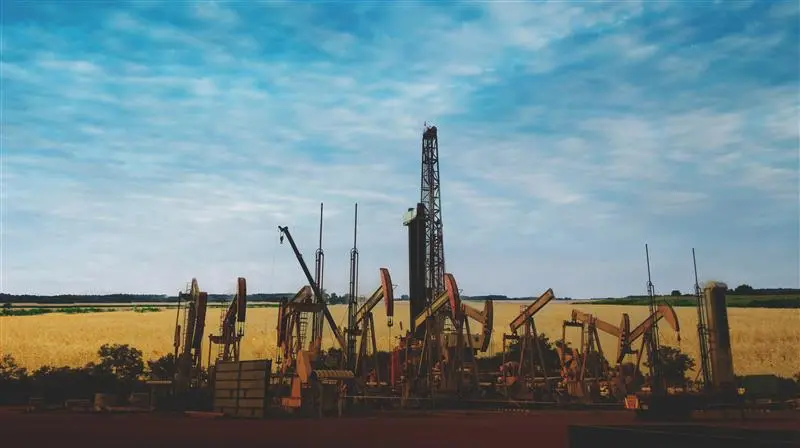Just two months into the new U.S. presidential administration, the conversation—and regulatory framework—around energy is shifting dramatically. Yet global energy trends unfold along much different trajectories and timelines than those governing politics. According to Pete Bowden, Jefferies’ Global Head of Industrial, Energy & Infrastructure Investment Banking, this is why most energy investors and leaders with whom he speaks are moving with patience and deliberation.
This week, Pete and his team are host to several hundred senior leaders from the U.S. and globally at the Jefferies Energy and Power Summit in Houston. There, they are to discuss the most consequential trends shaping global energy markets. In advance of the gathering, we sat down with Pete to get his take on a few key questions likely to be on the minds of meeting attendees.
Q: What will the near-term impact of the energy regulatory changes from the Trump Administration be?
A: The changes may not be as seismic as some think.
The perception that everything would change the day Trump entered the Oval Office in January ignores the realities of this industry’s lead time and decision-making process. When you think about major oil companies, you think about aircraft carriers, not PT boats. Once they have their 2025 drilling plan set, which is halfway through 2024, they don’t change it based on the outcome of an election.
Let’s say the Keystone XL pipeline is approved tomorrow. It will still take years to build and will not be in service until after Donald Trump leaves the White House.
Daniel Yergin likes to remind people that the president of the United States does not determine supply or demand or set the oil price. Donald Trump can, and likely will, ease up on permitting, allowing the industry to initiate activity on federal onshore lands or offshore blocks that it could not effectuate under President Biden. Even if that happens, though, oil companies will still move deliberately. For example, if President Trump were to open drilling in the Arctic, companies would still have to assess the liability and reputational risks of exploring there.
Ultimately, leaders in this sector want sensible public policy that recognizes fossil fuels as global commodities, and that the domestic availability of hydrocarbons solidifies American companies’ leadership role in the world.
Q: What will change at the Federal Trade Commission mean for the energy industry?
A: The Trump administration initially announced that it was retaining some core components of the Biden administration antitrust framework, suggesting there could be more continuity at the Federal Trade Commission than some expected. However, more recently, President Trump announced the firing of two Democratic members of the Commission. I do think the general attitude toward energy sector mergers will change. During the Biden administration, it seemed like almost every energy combination was reviewed, even if it had zero or negligible anti-competitive characteristics. Still, the FTC would ask select questions or issue a full second request, causing delay or risking a blocked deal.
Now, under President Trump, industry participants with wish lists that include deals they did not think could get through the FTC or DOJ will try to make those deals happen over the next few years.
Q: We’ve entered a higher-risk world with tariffs, potential trade wars, and shifting alliances. What will the impact of that be on the energy industry?
A: It has highlighted the importance of U.S.-produced hydrocarbons for the U.S. market. No matter the trade regime, we are the most significant end market.
Everyone is lining up trying to buy U.S. inventory because the production is proximate to the best end market. You know, at least directionally, what the regulatory regime will be.
Outside the U.S., one must worry about tariffs and shifting winds across different regimes worldwide. The U.S. has long been the most important end market and may now be the most important producer, so it is attractive in both ways.
Q: What is the state of the global energy transition?
A: In places like Europe, governments and voters are realizing that oil and gas will still be necessary for a long time to come because the energy transition has proven harder, more costly, and slower than some anticipated.
People are also learning that moving too quickly away from existing reliable energy sources can have serious, unexpected ecological consequences. For instance, Germany decommissioned nuclear power plants and assumed they could add enough offshore wind and solar energy to compensate. They could not. Consequently, Germany burns lignite coal in power plants to get through the winter. That is 1930s technology with a high carbon output per unit of electricity produced.
Q: How do you think the established players in the global energy industry can help fast-developing countries meet their demand?
A: The developing world needs the expertise and support of the developed world to meet its energy requirements correctly. If we do not provide them with that expertise and support and they do it the wrong way, it does not make a difference what we do in the lower forty-eight states on carbon capture or anything else. That is a drop in the ocean if we return to coal as the world’s flex fuel.
Focusing on the U.S. alone is like declaring a no-peeing section in the swimming pool. It just doesn’t work. Greenhouse gas emissions are a global challenge that requires solutions deployed globally.
Q: How do the significant investments the U.S. has made in renewable energy figure into the global picture?
Remember that the United States only accounts for about 14% of global carbon emissions, and our share is declining. Solar and wind deployment is growing rapidly here and worldwide and will likely continue. However, fossil fuels still account for over 80% of global energy demand.
To understand why, remember that over a billion people live in energy poverty worldwide, and fossil fuels are often the most available, affordable, and reliable option for countries to meet their energy needs.
Take India. India is electrifying and trying to do so with LNG, the right bridge fuel. However, President Biden’s previous export ban on LNG caused the country to pivot back to coal. This is a global problem that needs to be addressed globally.
Q: What should leaders in the energy industry think about that may not be at the top of their minds right now?
A: The industry should consider where it will be in 30 years. And that is hard for public companies to do. They need to make their numbers every quarter and have annual planning and deployment of capital cycles.
The industry needs to explain that even if fossil fuels are reduced in the power and transportation sectors, oil and natural gas liquids are still used in just about every household good. The idea that we will completely wean ourselves off oil is unrealistic.
If you believe that carbon capture and sequestration will be part of our carbon emissions control, oil and gas companies’ downhole expertise will be necessary. Carbon goes into depleted reservoirs, and the people who know how to put it there are the same people who took it out. These are big, multi-year projects with high capital intensity and a rigorous engineering overlay.
If you are a large oil company or energy producer, you should offer the public and policymakers a clear vision for how you can write the next chapter of this industry and ensure that energy is cleaner and more abundant.




